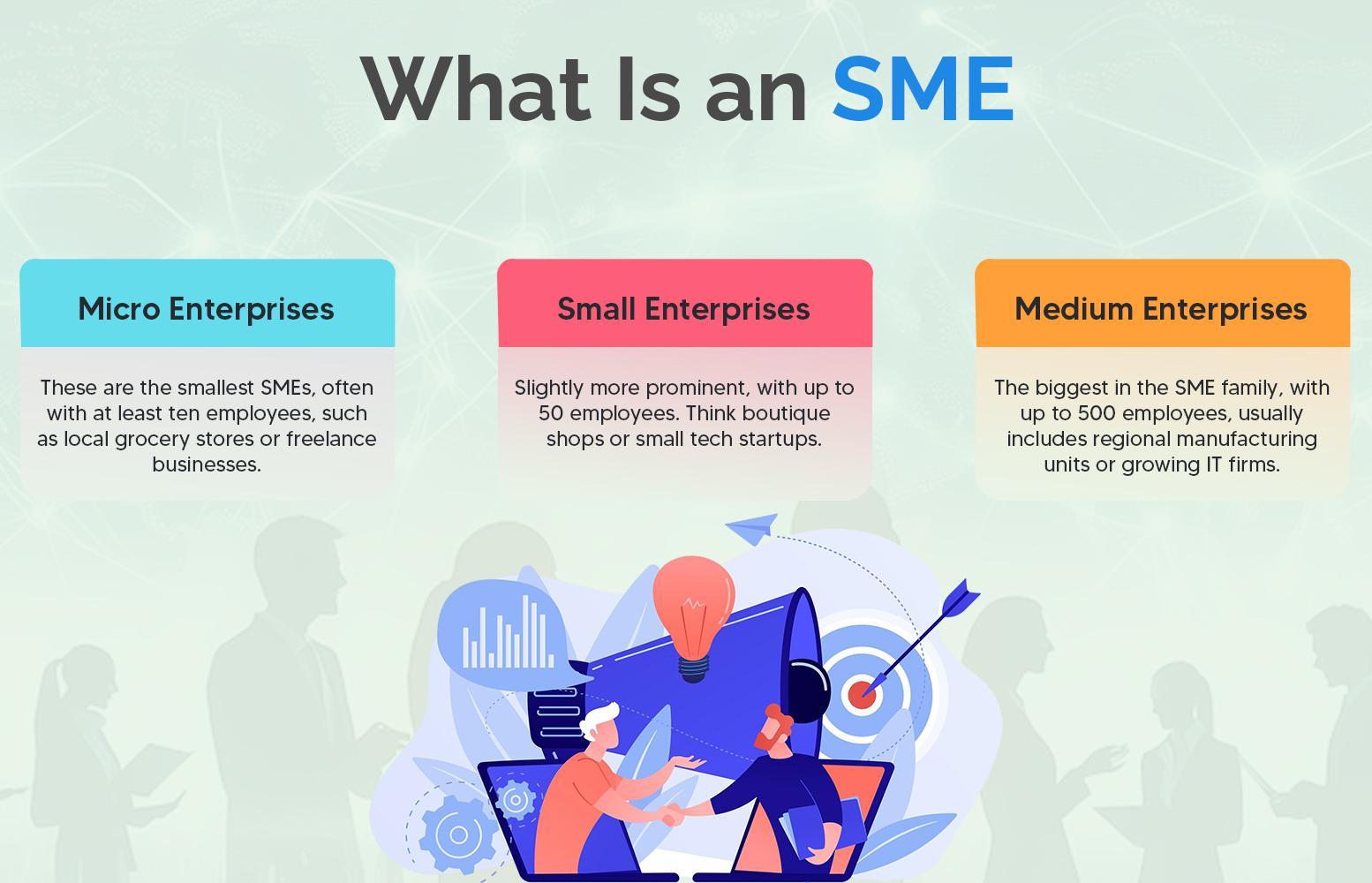
Incorporated vs Corporated: What Are the Major Differences Between Both?
November 19, 2024
Trade Payables in Accounting
November 22, 2024What Is an SME?

Have you ever wondered who keeps the economy buzzing, creates countless jobs, and gives big corporations a run for their money? Say hello to SMEs. These unsung heroes may not always make headlines, but they form the backbone of global economies.
If you’ve bought a cozy handcrafted sweater from a local boutique or enjoyed coffee at a family-run café, congratulations—you’ve supported an SME!
Let’s dive into the world of SMEs to understand what they are, why they matter, and how they shape the business landscape.

Table of Contents
Understanding Small and Medium-sized Enterprises
An SME is a business that operates on a smaller scale compared to large corporations. Think of it as the middle child of the business family—not as small as a home-based hobby, yet not as massive as a global corporation.
Factors like the Number of employees, Annual revenue, or Market reach typically define the size of an SME. However, the definition isn’t one-size-fits-all. For instance, in the EU, SMEs have fewer than 250 employees.
In the US, the limit can be extended to 500 employees, depending on the industry. Despite the technicalities, what unites SMEs worldwide is their entrepreneurial spirit and ability to adapt and innovate.
Why Are SMEs Important?
You might be wondering, “Why all the fuss about SMEs?” SMEs are the heartbeat of the global economy, driving innovation, creating jobs, and strengthening communities.
They contribute significantly to GDPs, foster local development, and provide personalized services that more giant corporations often overlook.
1. They Power the Economy
SMEs contribute a massive chunk to GDPs worldwide. In some countries, they account for over 90% of businesses and more than half the workforce. They keep the economic engine running, even in challenging times.
2. They Create Jobs
SMEs are job factories, especially in developing economies. From offering employment to artisans in rural areas to providing tech jobs in urban centers, SMEs have something for everyone.
3. They Foster Innovation
While large corporations have their R&D labs, SMEs innovate out of necessity. Whether developing eco-friendly packaging or creating niche products, they often bring fresh ideas to the market.
4. They Strengthen Communities
SMEs are deeply rooted in their local communities. They sponsor school events, hire locally, and create personal and approachable spaces.
Types of SMEs
SMEs come in all shapes and sizes, from the cozy neighborhood bakery to the bustling regional manufacturing firm. They’re categorized based on their scale, resources, and operations. Let’s explore the different types of SMEs and see what makes each one special!
Micro Enterprises:
These are the smallest SMEs, often with at least ten employees, such as local grocery stores or freelance businesses.
Small Enterprises:
Slightly more prominent, with up to 50 employees. Think boutique shops or small tech startups.
Medium Enterprises:
The biggest in the SME family, with up to 500 employees, usually includes regional manufacturing units or growing IT firms.
How SMEs Work
The magic of SMEs lies in their simplicity and adaptability. These businesses thrive on their ability to cater to local markets and build strong community connections. Whether a family-run café or a boutique tech startup, SMEs operate with a customer-first mindset, offering personalized services that make clients feel valued.
Unlike large corporations with rigid structures, SMEs are agile and can quickly adapt to changing market trends, making them well-suited for dynamic environments. Behind the scenes, SMEs are resourceful jugglers.
With smaller budgets and teams, they prioritize efficiently, wearing multiple hats to keep operations running smoothly. From managing inventory and customer relationships to innovating new products, SMEs rely on creativity and grit to stay competitive.
Challenges SMEs Face
Running an SME is no walk in the park. While these businesses are the backbone of the economy, they face unique challenges that can make or break their journey.
From limited access to resources to navigating fierce competition, SMEs often operate in a world of tight budgets and high expectations.
Let’s explore some of the most common hurdles SMEs encounter and how these obstacles shape their path to success:
1. Access to Funding
Securing loans or investments is often challenging for SMEs, especially for newer businesses without a financial track record.
2. Intense Competition
SMEs not only compete with local rivals but also with giant corporations that have more resources and brand recognition.
3. Resource Limitations
With smaller teams and budgets, SMEs must make the most of every penny and hour, leading to stretched resources.
4. Regulatory Compliance
Taxes, licenses, and regulations can be overwhelming, especially in countries with complex systems that burden smaller businesses.
5. Market Visibility
In crowded marketplaces, SMEs often need help to stand out and attract their target audience, requiring creative marketing strategies.
Conclusion
SMEs might be small in size, but their impact is monumental. They fuel economies, drive innovation, and bring communities together, all while juggling the joys and challenges of running a business.
Whether you’re an aspiring entrepreneur or a loyal customer of local businesses, remember—supporting SMEs means supporting the heart of the economy.
So, next time you buy that handcrafted candle or hire a local tech team, give yourself a pat on the back. You’re helping SMEs thrive and keeping the economy alive!
